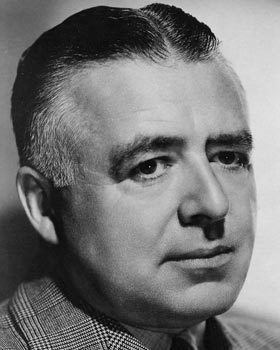Name Clarence Brown Role Film director | Children Adrienne Brown | |
 | ||
Full Name Clarence Leon Brown Spouse Marian Spies (m. 1946–1987), Alice Joyce (m. 1933–1945), Ona Wilson (m. 1922–1927), Mona Maris Parents Larkin Harry, Catherine Ann Brown Movies Similar People John Gilbert, Greta Garbo, Lionel Barry, Maurice Tourneur, Fredric March | ||
Intruder in the dust 1949 official trailer david brian clarence brown drama movie hd
Clarence Leon Brown (May 10, 1890 – August 17, 1987) was an American film director.
Contents
- Intruder in the dust 1949 official trailer david brian clarence brown drama movie hd
- Garbos Director Talks
- Early life
- Career
- Death
- Selected filmography
- References
Garbo's Director Talks!
Early life
Born in Clinton, Massachusetts, the son of Larkin Harry Brown (1866-1942) a cotton manufacturer and Katherine Ann Brown (nee Gaw) (1865-1954), Brown moved to Tennessee when he was 11 years old. He attended Knoxville High School and the University of Tennessee, both in Knoxville, Tennessee, graduating from the university at the age of 19 with two degrees in engineering. An early fascination in automobiles led Brown to a job with the Stevens-Duryea Company, then to his own Brown Motor Car Company in Alabama. He later abandoned the car dealership after developing an interest in motion pictures around 1913. He was hired by the Peerless Studio at Fort Lee, New Jersey, and became an assistant to the French-born director Maurice Tourneur.
Career
After serving in World War I, Brown was given his first co-directing credit (with Tourneur) for The Great Redeemer (1920). Later that year, he directed a major portion of The Last of the Mohicans after Tourneur was injured in a fall.
Brown moved to Universal in 1924, and then to MGM, where he stayed until the mid-1950s. At MGM he was one of the main directors of their female stars; he directed Joan Crawford six times and Greta Garbo seven.
He was nominated five times (see below) for the Academy Award as a director and once as a producer, but he never received an Oscar. However, he won Best Foreign Film for Anna Karenina, starring Garbo at the 1935 Venice International Film Festival.
Brown's films gained a total of 38 Academy Award nominations and earned nine Oscars. Brown himself received six Academy Award nominations and in 1949, he won the British Academy Award for the film version of William Faulkner's Intruder in the Dust.
In 1957, Brown was awarded The George Eastman Award, given by George Eastman House for distinguished contribution to the art of film. Brown retired a wealthy man due to his real estate investments, but refused to watch new movies, as he feared they might cause him to restart his career.
The Clarence Brown Theater, on the campus of the University of Tennessee, is named in his honor. He is tied with Robert Altman and Alfred Hitchcock for the most Academy Award nominations for best director without a single win.
Death
Brown died from kidney failure on August 17, 1987, at the age of 97. He is interred at Forest Lawn Memorial Park in Glendale, California.
On February 8, 1960, Brown received a star on the Hollywood Walk of Fame at 1752 Vine Street, for his contributions to the motion pictures industry
Clarence Brown features in the 1980 UK TV series Hollywood episode 12, his interview filmed in 1969 he discusses John Gilbert
Selected filmography
NOTE: In 1929/1930, Brown received one Academy Award nomination for two films. According to the Academy of Motion Picture Arts and Sciences, "As allowed by the award rules for this year, a single nomination could honor work in one or more films."
